Mesquite, TX Pollen and Allergy Report for Summer 2023
Pollen Allergy Trends in Mesquite, TX
When is pollen lowest in Mesquite, TX?

February
Lowest month total PPM
Avg. PPM
When is pollen highest in Mesquite, TX?

March
Highest month total PPM
Avg. PPM
How does pollen in Mesquite, TX compare to Texas?
Mesquite has a higher average PPM than the state of Texas.
Mesquite yearly avg PPM:
Texas yearly avg PPM:
How does pollen in Mesquite, TX compare to the USA?
Mesquite has a higher average PPM than the USA.
Mesquite yearly avg PPM:
USA yearly avg PPM:
Is pollen worse this year in Mesquite, TX?
Spring 2023 was worse than spring 2022.
Spring 2023 PPM:
Spring 2022 PPM:
Average PPM in Mesquite, TX
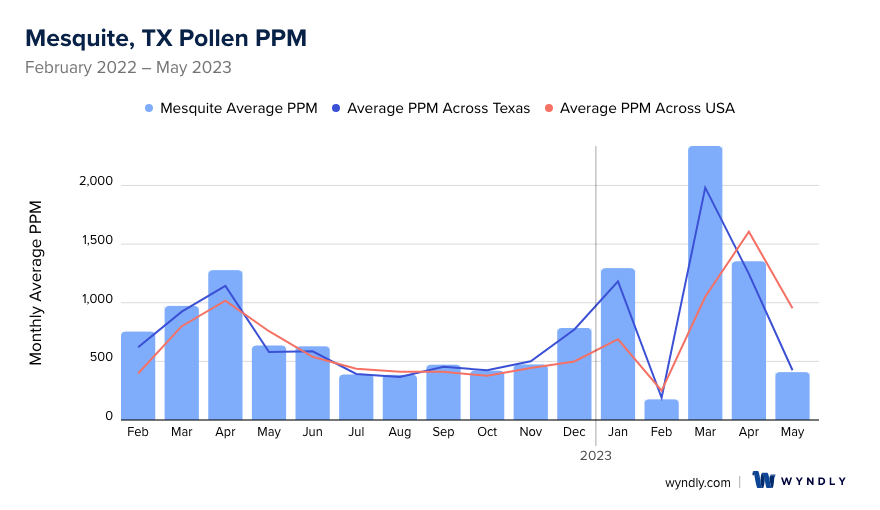
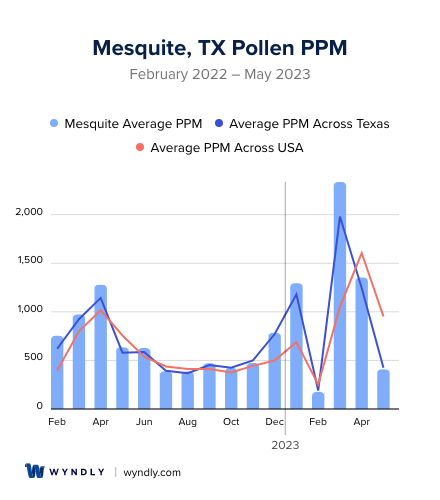
Mesquite, TX Pollen and Allergy Breakdown by Month
Grass
When is grass pollen highest in Mesquite, TX?
February has the highest grass pollen in Mesquite, TX with an average PPM of
When is grass pollen lowest in Mesquite, TX?
December has the lowest grass pollen in Mesquite, TX with an average PPM of
Tree
When is tree pollen highest in Mesquite, TX?
March has the highest tree pollen in Mesquite, TX with an average PPM of
When is tree pollen lowest in Mesquite, TX?
July has the lowest tree pollen in Mesquite, TX with an average PPM of
Weed
When is weed pollen highest in Mesquite, TX?
June has the highest weed pollen in Mesquite, TX with an average PPM of
When is weed pollen lowest in Mesquite, TX?
February has the lowest weed pollen in Mesquite, TX with an average PPM of
Mesquite, TX Pollen Monthly Breakdown by Pollen Type
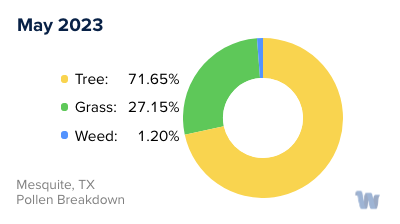
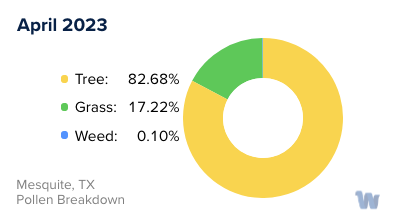
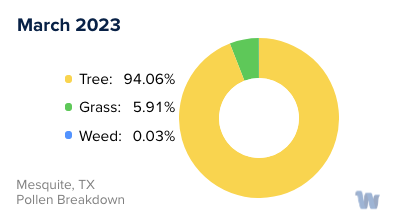
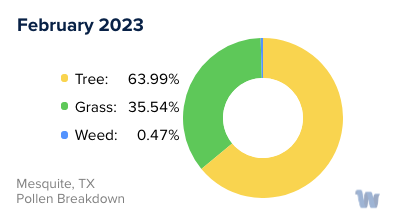
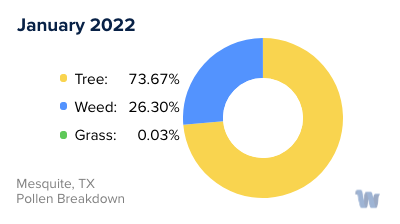
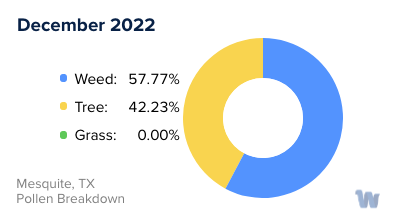
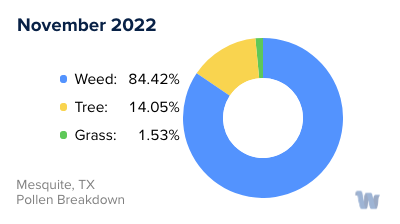
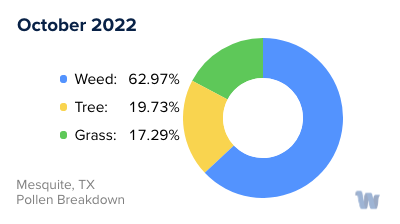
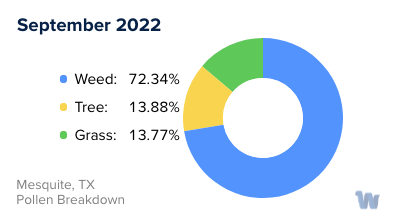

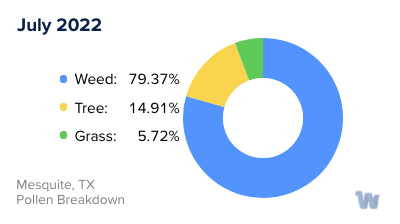
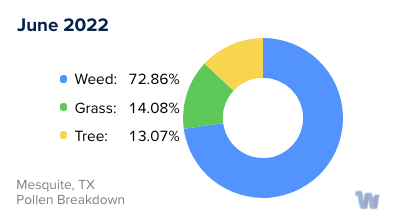
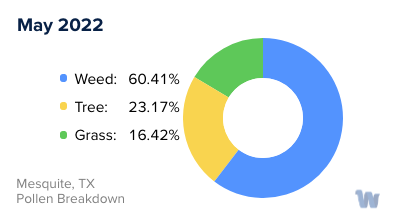
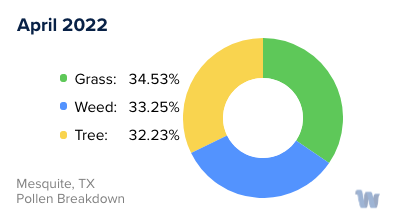
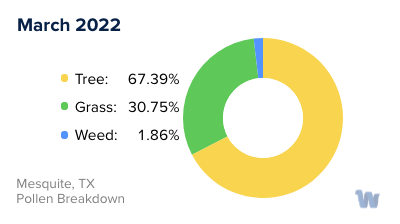
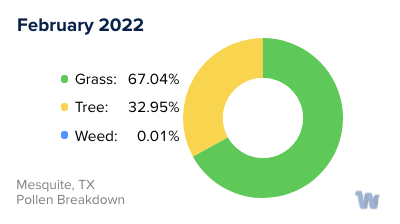
Pollen and Hay Fever in Mesquite, TX
In Mesquite, Texas, residents and visitors alike need to be aware of the different types of pollen that can trigger allergies throughout the year. Understanding the types of pollen and the seasons in which they are most prevalent can help individuals prepare for potential allergy flare-ups.
One major pollen offender in the area is mesquite tree pollen. The mesquite tree is well-known for its culinary applications, particularly for smoking and barbequing foods. What many might not realize is that mesquite trees produce a substantial amount of pollen, which can easily carry on the wind and trigger allergy symptoms like nasal congestion, sneezing, and even asthma flare-ups. It's important to note that the pollen is released not only during the burning or smoking processes but also naturally from the trees themselves, making exposure almost inevitable for those living in the vicinity of these trees.
However, mesquite is not the only allergen to be mindful of in Mesquite, Texas. The state's varied climate cycles and weather patterns contribute to a diverse array of allergens throughout the year. From November to February, mountain cedar pollen becomes a nuisance, especially since the pollen can travel hundreds of miles. This is followed by the elm, ash, and mulberry season, which runs from January to May. These trees produce pollen that can cause symptoms like sneezing, wheezing, and asthma-like symptoms.
The spring months of March to May introduce oak and pecan tree pollen, along with pollen from grasses like Bermuda, Johnson, and Kentucky bluegrass. Due to the abundance of these grasses, this can be an especially irritating time of year for anyone sensitive to grass pollen.
June and July offer a brief respite as the most common allergens stop producing pollen, and the pollen counts drop. However, come August to November, ragweed pollen becomes prevalent. This flowering weed is common in tropical and subtropical regions, including the southwestern U.S.
and its pollen can cause symptoms such as runny noses, sneezing, itchy eyes, and asthma flares.
As the ragweed season tapers off in November, the cycle restarts with the bloom of the mountain cedar, making allergies in Mesquite, Texas, a year-round concern.


